
- Author: Mark Bolda
- Author: Steven Koike
For fresh market strawberry, damage to the leafy calyx often results in reduced quality and marketability of the fruit. The calyx is made up of the green, leafy sepals that initially surround and protect the young blossom. As the flower transforms into the fruit, the calyx remains intact and becomes the green whorl of leafy material on the top of the fruit. These are also referred to as “caps.”
Damaged calices exhibit various symptoms, including tan to brown discolored tissue, shriveling of the leafy sepals, and eventual drying and death of the calyx tissue. Diagnosing the cause of dry calyx problems may be difficult because such damage could be caused by disease, inherent traits of some cultivars, or calcium deficiency.
Disease: Leaf blotch disease of strawberry is caused by the fungus Zythia fragaria. The disease primarily causes a leaf disease, with symptoms consisting of tan to gray leaf lesions; lesions usually contain tiny dark brown specks that are the fruiting bodies of the pathogen. For coastal California, leaf blotch is an early spring disease that disappears by mid-summer. Fruit calyx tissues can also become infected and develop tan to brown lesions that may or may not have the fruiting bodies (Photos 1 and 2).
Cultivar trait: Dry calyx can also arise from inherent tendencies of certain varieties when exposed to certain environmental conditions. For example, dry calyx was a common occurrence on the first fruit set, early in the year, for the cultivar Camino Real (Photos 3 and 4). Later in the spring, however, Camino Real fruit grew normally and dry calyx disappeared. Interestingly, for this particular variety the dry calyx is not known to occur when it is grown in Mexico.
Calcium deficiency: Dry calyx symptoms can also be associated with nutritional factors. Young foliage having pinched, brown, dead leaf tips exhibit symptoms of calcium deficiency (Photo 5); such deficiency can be confirmed by tissue testing. On such plants, calices can sometimes develop dry, tan to brown tips (Photo 6) that apparently are linked to this calcium problem.
Difficulty in diagnosis: Dry calyx problems caused by disease, cultivar traits, and calcium deficiency can look very similar. Therefore, field diagnosis can be difficult. Leaf blotch disease on calices can be confirmed if fruiting bodies are present in the calyx tissue or if the calyx tests positive when tested in a pathology lab. Dry calyx on cultivars known to develop this problem is likely related to the cultivar itself. If leaves show calcium deficiency symptoms, dry calyx could be related to nutrition. In addition, calices on strawberry plants could simultaneously suffer from multiple causes of dry calyx. Table 1 summarizes these various factors.
Table 1. Summary of possible causes of dry calyx damage
|
|
|
Dry Calyx |
|
|
Factors |
Zythia leaf blotch |
Inherent cultivar trait |
Calcium deficiency |
|
Calices with fruiting bodies |
yes |
no |
no |
|
Foliage with leaf blotches |
yes |
no |
no |
|
Cultivar known to show drying |
no |
yes |
no |
|
Young foliage with deficiency |
no |
no |
yes |
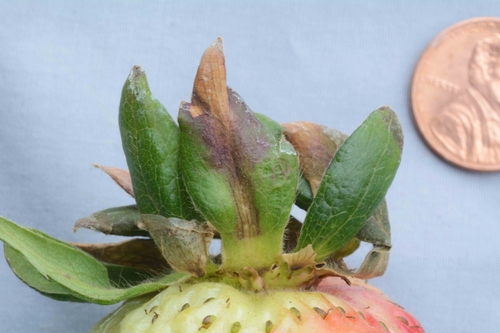
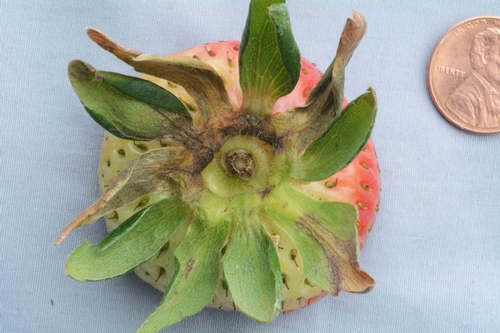
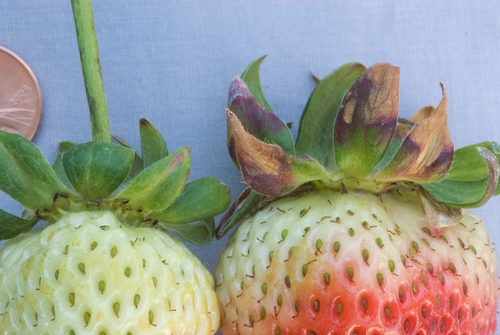
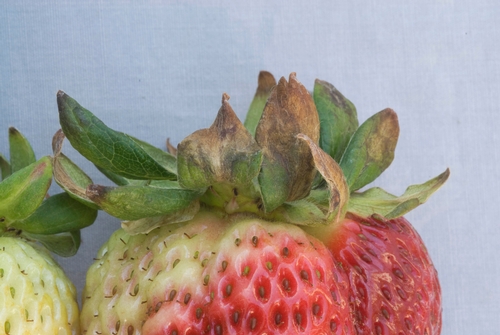
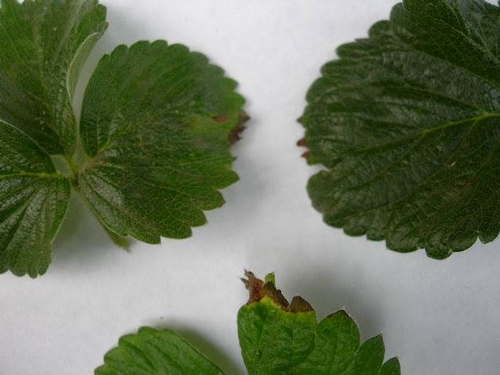
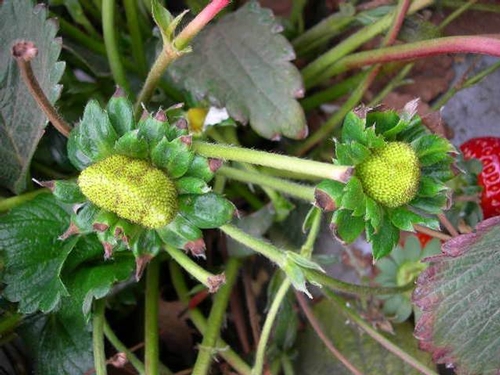


You did not mention any association with salt toxicity?
Does that mean that this problem cannot be connected to salts?
Mark
Hi I think also that sometimes calcium could not be moving fast enouth to where it is needed.
Comgratulation excelent article.
We are seeing calyxes like this on our 4 month old Monterrey variety.
Currently we are experiencing hot and cold temperatures, whilst we are in winter.
Any advice please would greatly be appreciated.
Regards
Garry
If on the other hand it is across all your fruit without regard to age, we are looking at something else, perhaps even one of the situations named above.
Mark